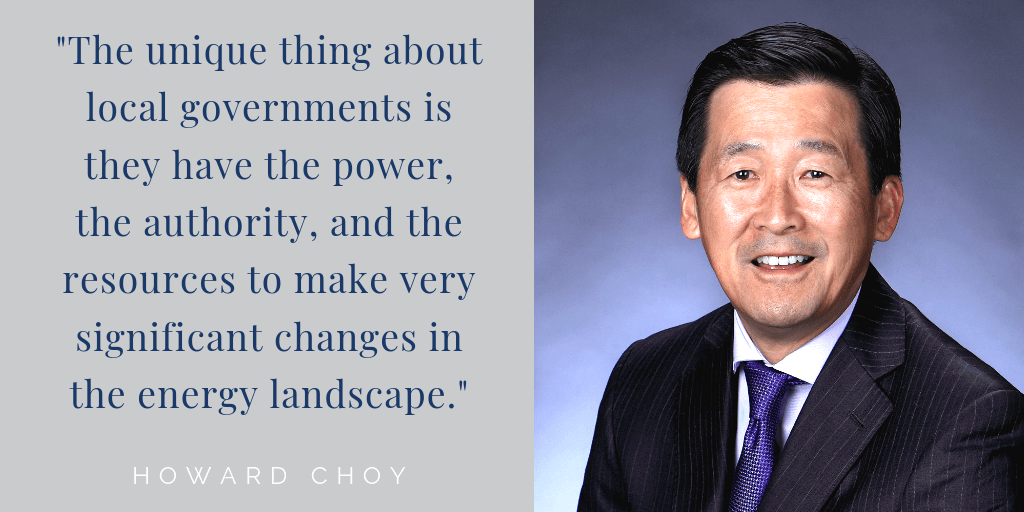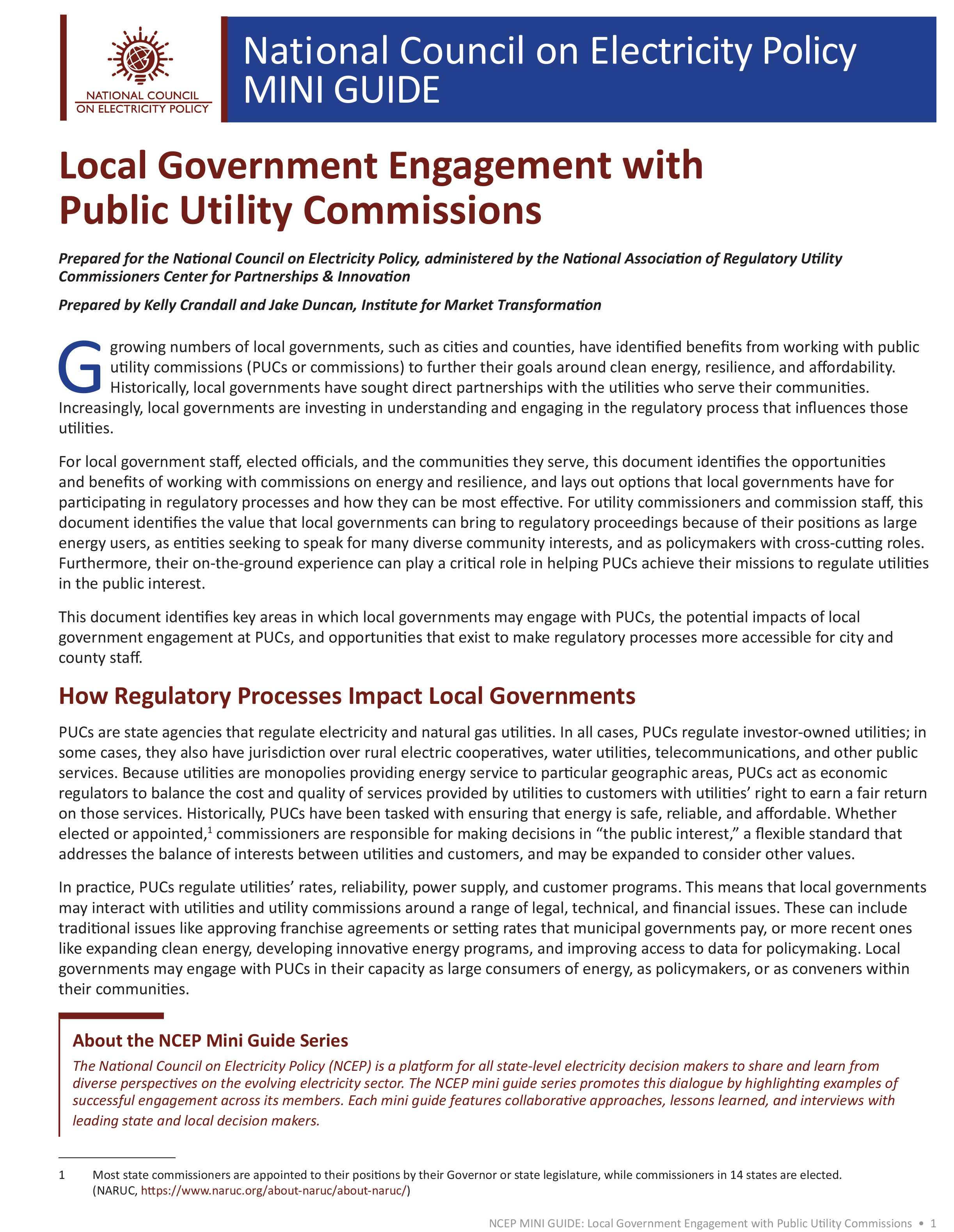Local governments have a lot on their plate: they build and maintain infrastructure, provide public services, and support local economic development. Why should they add engaging with their state public utilities commission (PUC) to the list?
The regulators at PUCs oversee utility rates, programs, and plans that have a direct impact on local government operations and on how residents and businesses use energy. While much can be gained by fostering a direct connection with the utility, local governments are finding that engaging at the PUC offers a unique opportunity to influence the broader landscape in which the utility operates.

How and Why Communities Participate in Regulatory Proceedings
Engaging at the PUC takes work: local governments must learn the regulatory language and process, determine when and how to intervene or comment, read and submit materials, and attend meetings, which may sometimes be far from where the local government is located. Despite this, local governments are identifying creative and resource-appropriate ways to be involved in PUC proceedings to advance clean energy goals, promote local energy resilience, and encourage affordability and economic development.
In partnership with the National Association of Regulatory Utility Commissioners (NARUC), IMT interviewed local government staff and commissioners or commission staff in four states—California, Colorado, Hawaii, and Minnesota—to understand the value of the local government voice in regulatory processes and proceedings. The resulting report is part of a series of mini-guides developed for the National Council on Electricity Policy, administered by NARUC.
In researching this project, Howard Choy, the retired General Manager of the Office of Sustainability for the County of Los Angeles, California and retired Board Chair for the Local Government Sustainability Energy Coalition, explained some benefits from participating in PUC proceedings and how pooling resources in California has enabled several communities to participate without straining resources.
What issues do local governments focus on at the PUC?
Howard Choy: We were pleased to see that the Commission was very interested in what local governments had to say. Over the course of my time at the County, we participated in about 15–20 different proceedings to understand what was happening in the industry. We would intervene as an active participant frequently, and often we would enlist to receive the updates, correspondence, and documentation associated with the proceedings. We were active interveners in a handful of arenas. It was a very effective way for the County to become informed and engaged in the industry, and it led to some significant accomplishments by the County at the PUC.
A major accomplishment of the County was to work with the Commission to allow local governments to become independent administrators of energy efficiency programs through Regional Energy Networks and Local Government Partnerships. They could be on par with the investor-owned utilities to receive money, design their own programs, and run their own programs independently of the utilities.
What do you think is unique about the local government perspective compared to that of other participants in regulatory processes?
Choy: The unique thing about local governments is they have the power, the authority, and the resources to make very significant changes in the energy landscape, particularly in California. Local governments can pass legislation. Local governments can create financing. Local governments can create codes and standards, ordinances, and local legislation. Local governments have code compliance and code development authority. Local governments can create special districts to operate energy programs. There’s a lot of power that local government has that, in my opinion, has never been sufficiently exercised.
What resources do local governments have to engage in regulatory processes?
Choy: The County [of Los Angeles] is one of a couple of California local governments that were large enough and had budgets large enough to participate in proceedings. Most local governments cannot. We created an organization called the Local Government Sustainable Energy Coalition (LGSEC), which was meant to get local governments to pool their resources and hire consultants. It is fee-based membership and we use the funds to represent the interests of local governments as a group at all state energy regulatory bodies.
How California’s example can help local governments engage at PUCs
LGSEC’s work shows that the local voice can be powerful in regulatory proceedings. Local governments are both large utility customers and local policymakers, and by leveraging both capacities, local governments can create programmatic and policy changes. Moreover, by pooling funds, LGSEC is able to hire legal and technical experts to intervene in proceedings and provide more specific recommendations.
For local government leaders seeking to engage with their PUC, IMT’s new Mini Guide highlights a variety of approaches, from filing public comments or formally intervening, hiring staff with specific regulatory expertise, and working directly with commission staff to understand how to engage in a particular process. No matter the situation, there is a way for your government to participate in regulatory proceedings to advance critical local goals. The full Mini Guide is now be available on both NARUC and IMT’s website.

